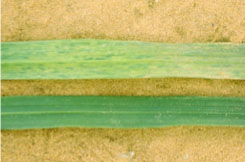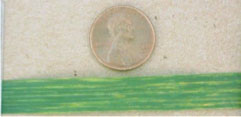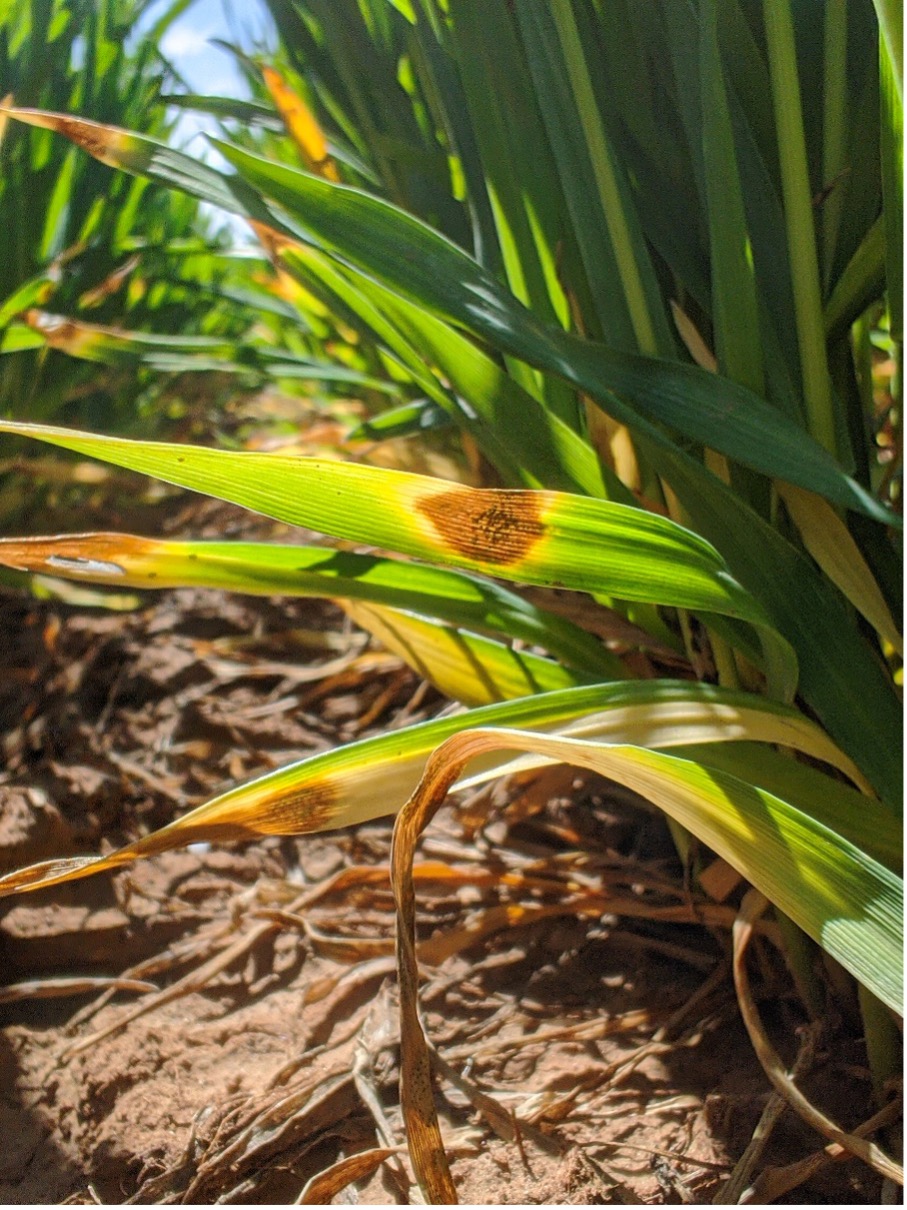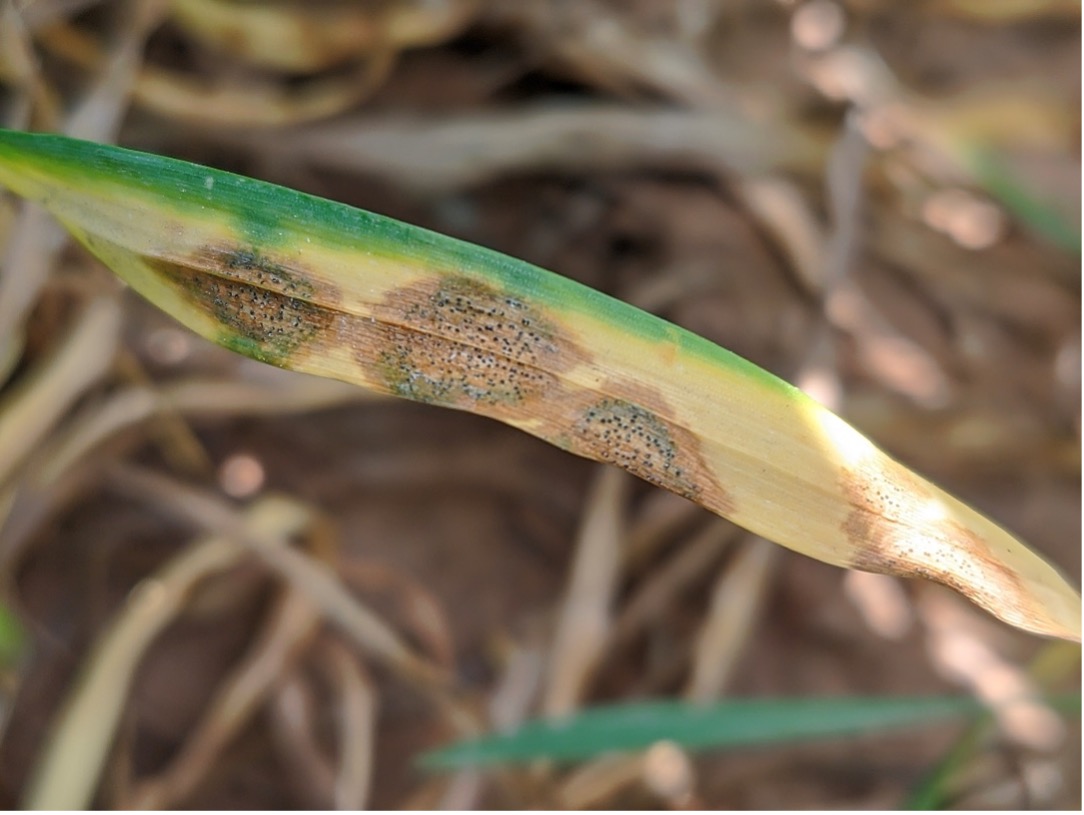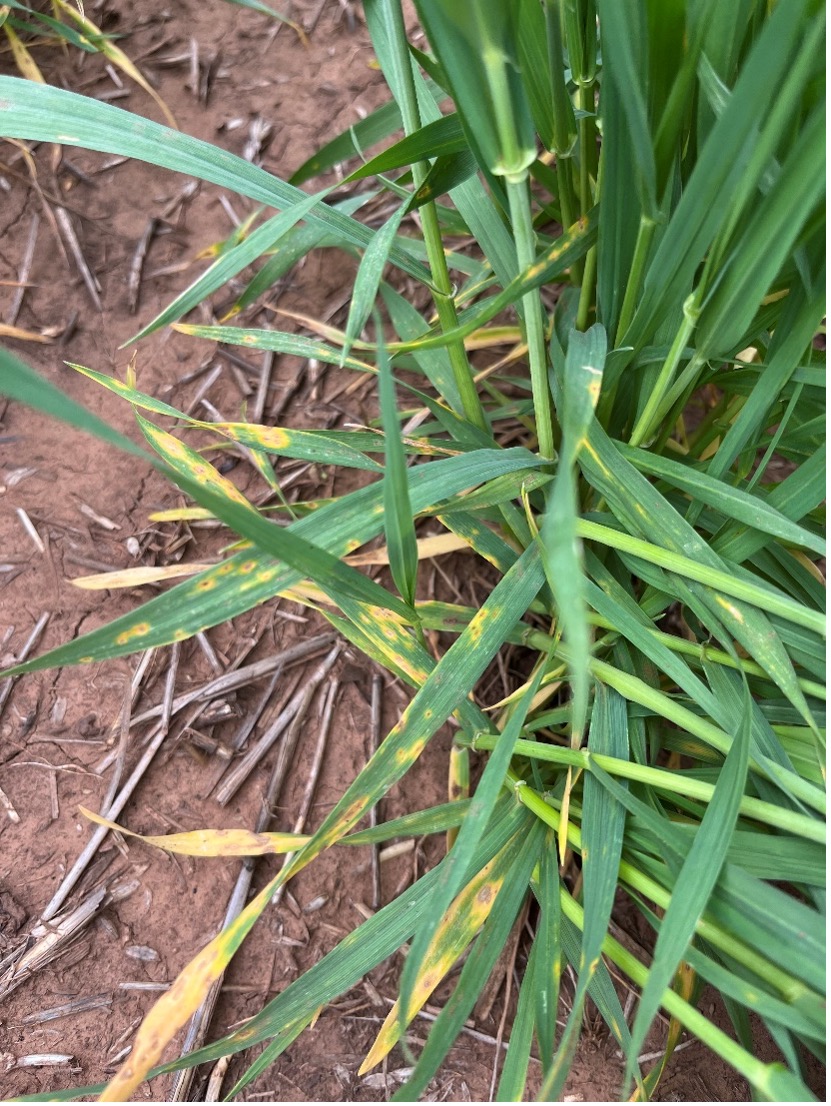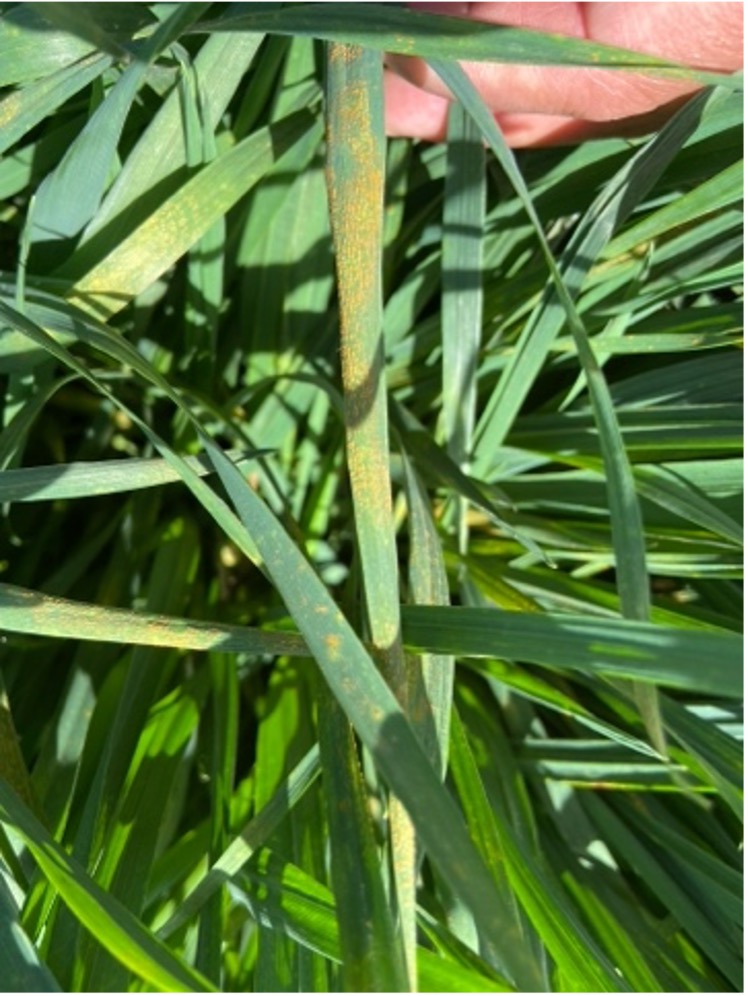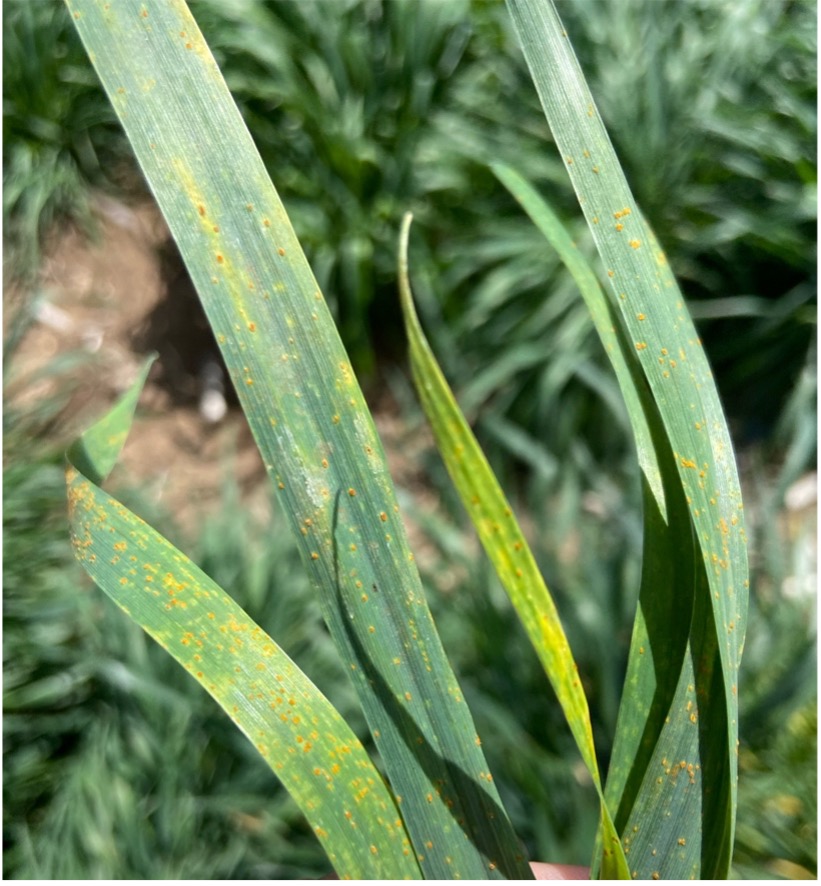Wheat Disease Update – 21 March 2024
Late February-early March 2024, symptoms of wheat soilborne mosaic virus (SBWMV)/wheat spindle streak mosaic virus (WSSMV) were observed at Oklahoma State University (OSU) Entomology and Plant Pathology farm in Stillwater. The susceptible wheat check ‘Vona’ and other susceptible hard winter wheat breeding lines showed stunting and yellowing (Figure 1, 2). Most wheat varieties grown in Oklahoma and the U.S. Central Plains are resistant to these virus diseases.
Figure 1. Resistant vs. susceptible hard winter wheat lines to wheat soilborne mosaic virus /wheat spindle streak mosaic (Stillwater, OK; February 29, 2024).
Figure 2. Wheat showing reactions to the wheat soil-borne mosaic (WSBM)/wheat spindle streak
mosaic (WSSM) complex.
Top: Symptoms typical of WSBM.
Bottom: Symptoms typical of WSSM.
On March 15, 2024, Septoria tritici blotch (Figure 3, 4) was observed in Dr. Amanda Silva’s variety trial at the OSU North Central Research Station in Lahoma, OK (Garfield County). Septoria tritici blotch was observed on all wheat varieties, however symptoms were limited to the lower canopy. On March 15, 2024, we also observed symptoms of tan spot (Figure 5) at the OSU South Central Research Station in Chickasha, OK (Grady County). Tan spot incidence was low to moderate at Chickasha and symptoms were observed on lower leaves.
Figure 3. Wheat showing reaction to Septoria tritici blotch (Lahoma, OK; March 15, 2024).
Figure 4. Septoria tritici blotch on wheat leaf. Black specks on the lesions indicate pycnidia (Lahoma, OK; March 15, 2024).
Figure 5. Symptoms of tan spot on lower wheat leaves (Chickasha, OK; March 15, 2024).
Stripe rust (Figure 6) and leaf rust (Figure 7) have not yet been observed in Oklahoma. However, there were reports of stripe rust in wheat fields in both Louisiana and Texas as early as January 31. On March 7-8, 2024, Dr. Shuyu Liu (Wheat Breeder, Texas A&M University) reported high incidence and severity of stripe rust at McGregor, Chillicothe, and Castroville TX. The early appearance of stripe rust in Texas indicates a potential stripe rust epidemic in Oklahoma if the weather conditions continue to be favorable. Leaf rust was also observed at lower incidence/severity at Castroville, TX on March 8, 2024 and it can develop further with rising temperature.
Figure 6. Stripe rust on a susceptible winter wheat variety in Castroville, TX (Photo: Dr. Shuyu Liu, March 8, 2024).
Figure 7. Leaf rust on a susceptible winter wheat variety in Castroville, TX (Photo: Dr. Shuyu Liu, March 8, 2024).


